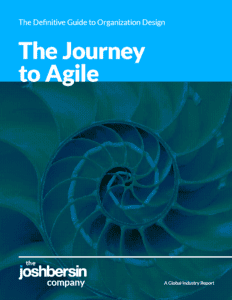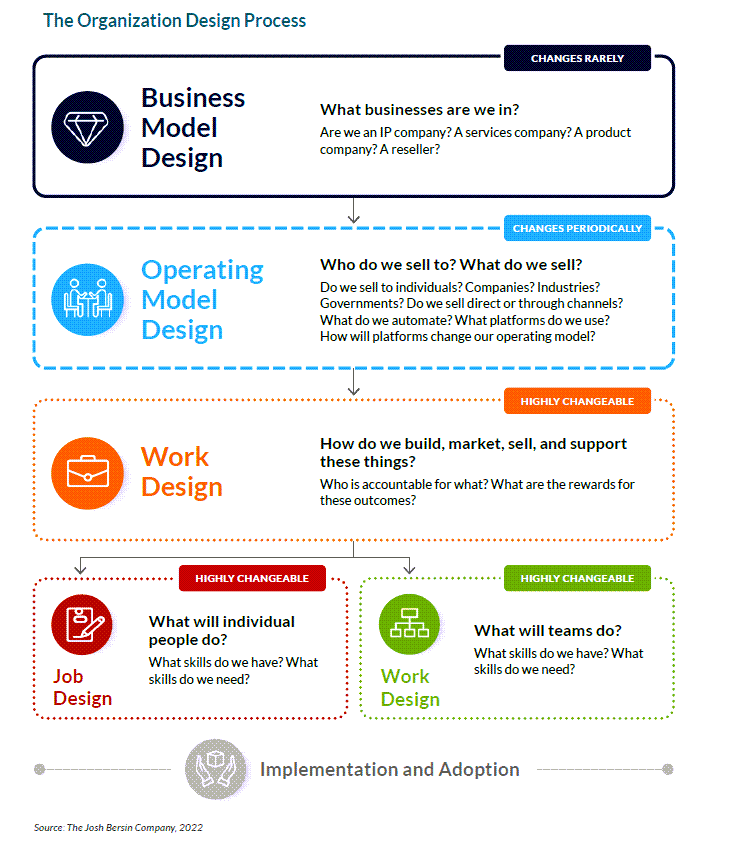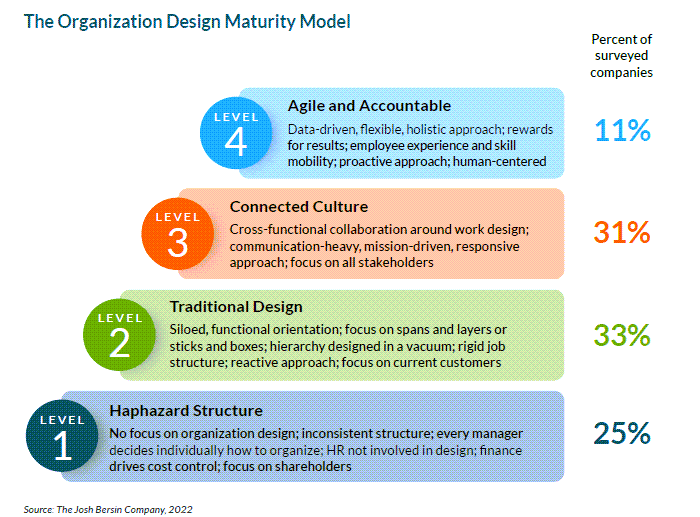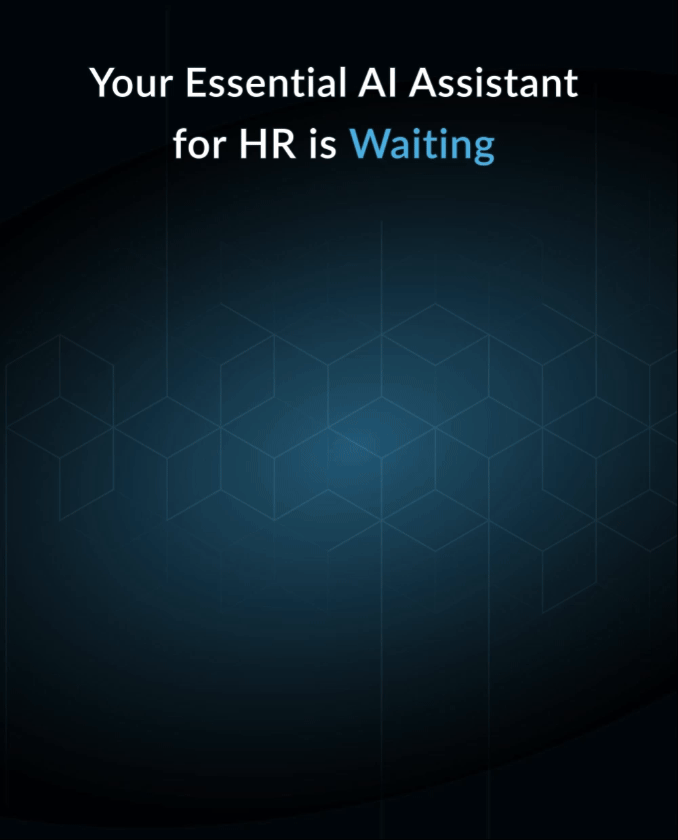Haphazard Organization Design Is Holding Companies Back From Growth
Just released. New Research on Designing Jobs for the Future of Work.
Every day there’s another roadblock to growth. Inflation at nearly 8%, a war in Eastern Europe, more jobs than we have people, and employees leaving companies in droves.
As part of our Global Workforce Intelligence Project we’ve been interviewing CHROs in healthcare, banking, and financial services. And the stories are almost heartbreaking.
Healthcare providers simply cannot find nurses and many are facing turnover rates of 50-70%. This week the CHRO of one of the largest hospital networks in New York told us they are paying contract nurses almost $200 an hour to come to work, and they still can’t find enough people.
 The financial services industry is the same. Regional and national consumer banks are telling us people “simply do not want to work for a bank” and highly skilled workers want to work in FinTech, professional services, or technology firms. They, too, are struggling to find and retain people, raising wages at a steady clip as they try to hang on to the people they have.
The financial services industry is the same. Regional and national consumer banks are telling us people “simply do not want to work for a bank” and highly skilled workers want to work in FinTech, professional services, or technology firms. They, too, are struggling to find and retain people, raising wages at a steady clip as they try to hang on to the people they have.
What’s really going on? As we describe in our GWI research, every company is transforming and the people are just tired and ready for a break. The result is a steady increase in recruiting budgets, higher wages, and lots and lots of focus on recruitment.
What if you had another answer? One that would make hiring and growth easier, and would also make your company more productive and your people happier?
That answer does exist, and the answer is to “redesign your work.” You have to start to “design for productivity” – the days of just “hiring to grow” are over.
We just completed a year-long study of Organization Design in companies and found something very profound. While only 11% of companies are experienced in this domain, it’s one of the most important secrets of success. Rather than just “post a bunch of job descriptions” and hope smart people will apply, it’s time to look at the work you need to do and redesign the organization for growth.
Let me give you an example. In healthcare, there is a concept of “working at the top of your license.” This means spending time on the work you’ve been trained and certified to do.
 |
It turns out that most nurses only do this about a third of the time. More than two-thirds of nurses’ time revolves around staffing, hiring, training, scheduling, and dealing with administration, bureaucracy, or paperwork. Yes, we all have to do that stuff – but when there is a looming shortage of two million nurses and they’re making $200 an hour, can’t you redesign your clinical operations to avoid this type of work?
Yes, of course you can. And that’s what modern organization design (or “Work Design”) is all about.
I can give you an example in our own company. As we started to staff up the GWI project we initially looked for a Senior Director or VP of Research to run this effort. We talked with a dozen or more people and in each interview, I realized “this person may be over-qualified” or “this person may be bored doing this work” or “this person may not be ready to work for a small company.” Eventually, we took apart the work we needed and we realized that we don’t need a highly credentialed senior labor economist, we need a team of well-trained, highly motivated analysts. And we started to hire the right people.
I talked with the CHRO of a large insurance company this week and he reinforced that most of his senior managers tend to “over-hire” for the jobs they have. They define each job as a “super job” and look for someone highly qualified (over-qualified) for the work. The result? Wages are high and turnover is high too. Instead, he has built an entire OD team to help people “decompose the work” before they hire, and then hire people for fit, not as someone to “make the job work.”
Demographics: This Is An Urgent Problem
Let me give you a little more incentive. If you think the talent shortage is a problem now, just wait. It’s going to get much worse. More than 2.5 million people retired “early” during the pandemic and the fertility rate in all maturity economies is far below replacement. (Replacement is 2.1: US Fertility rate is 1.84, Canada is 1.57, Germany is 1.48, the UK is 1.86). In fact, the numbers are scary. If we don’t do something to rapidly increase immigration and educational advancement, it’s going to get much harder to hire in the years ahead. Even China’s fertility rate is only 1.6.
What does this mean? Every company is now in the “productivity business.” If you can’t find a way to continuously reorganize your company to improve productivity, you’ll simply fall behind.
Last week we talked with one of the hottest technology companies in the world and their HR team has become one of the “least productive” in their industry. Their particular company is deploying what they call “human middleware.” People are running around doing things that HR Tech systems should be done automatically. They already have Workday and lots of other great tools – they just have not deployed them well or organized for success.
Learning To Do This Well
It turns out this is not really a “black art,” but rather a big new domain of expertise needed in HR. We just completed our groundbreaking research on Organization Design and we found lots of things you can learn. Here are a few things to consider, and I suggest you read Kathi’s article or download the research for more.
First, let me show you the process model we developed. Organization design is not a process of “spans and layers.” It’s far more. This is a process of bottom-up “work design” and building jobs that cluster work tasks in the optimum human way.
 |
Suppose, for example, you want to improve sales productivity. If you have ten salespeople with a $1 Million quota each, you’re asking each salesperson to prospect, qualify, propose, and close business. They may or may not be able to do this. On the other hand, if you automate the prospecting process, use data to qualify leads, and then hire sales development reps to build proposals, your senior salespeople may be able to sell $2M per year. This is one of the most obvious “design problems” in business, yet most companies don’t do it.
 I just talked with a large semiconductor manufacturing company and they see a massive shortage in R&D. Their research team studies new processes, examines customer designs, and develops iterative solutions to increase yield and quality. And their supply Masters and PhD candidates has gone dry.
I just talked with a large semiconductor manufacturing company and they see a massive shortage in R&D. Their research team studies new processes, examines customer designs, and develops iterative solutions to increase yield and quality. And their supply Masters and PhD candidates has gone dry.
What will they do? They’re digging into AI tools and advanced analytics to further automate the process. This will create new jobs, and let the process engineers work at the “Top of their License.”
Remember, in a world where talent is plentiful, we can always “Hire more” to grow. Today, as the talent market is constrained, we have to “design better” to grow.
A New And Critical Domain in HR
This is not a new topic, but the domain expertise is still low. As we interviewed and surveyed companies, we found that more than half had very little expertise in this area. Kathi’s article discusses this in more detail, and our research will help you understand more about what to do next.
One of the big findings, by the way, is that “structure does not matter.” Org design is about assigning accountability and aligning skills and mission, not just creating a good-looking hierarchy. So topics like goal setting, clarity of purpose, and constant job mobility are all part of the solution.
 |
Let me leave it at this. In today’s ever-tightening labor market, Organization Design is your strategic weapon. If you aren’t regularly looking at jobs, roles, work design, and accountability, your company will struggle to grow.
Stay tuned for much more from us on this urgent topic.
Additional Resources
The Job Market Is Going Crazy. What Are We Going To Do About It?
Introducing The Global Workforce Intelligence Project
Redesigning Jobs, Organizations, And Work: The Biggest Opportunity Of Our Lives
